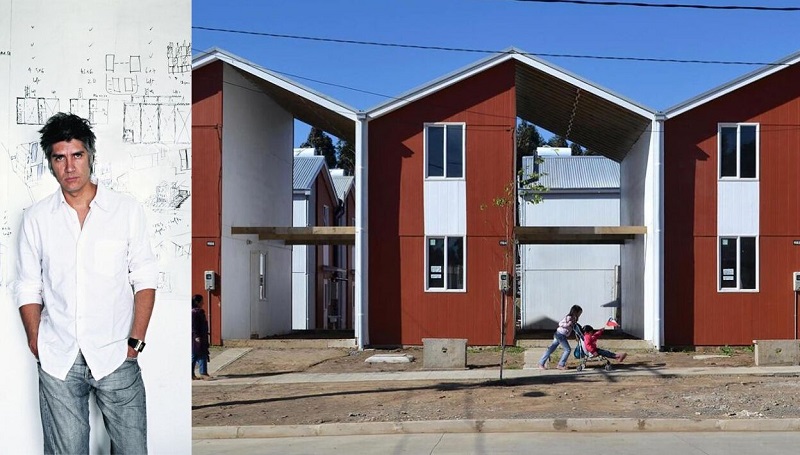ISABEL RUBIO ARROYO | Tungsteno
Chilean architect Alejandro Aravena boasts that he builds "half of a good house". Not because he can't build entire homes, but because of his innovative approach: offering a starter home with a complete basic structure and unfinished space. The aim is for families to expand and improve it as their resources and needs allow.
A house built in instalments
Aravena was awarded the prestigious Pritzker Prize in 2016. "His built work gives economic opportunities to the less privileged, mitigates the effects of natural disasters, reduces energy consumption, and provides a welcoming public space," said the jury. He thus became the first Chilean and fourth Latin American to receive the prize, after Luis Barragán (1980), Oscar Niemeyer (1988) and Paulo Mendes da Rocha (2006).
His buildings can be found throughout Chile, the United States, Mexico, China and Switzerland. Among them, the jury highlighted the Siamese Towers, the UC Innovation Centre - Anacleto Angelini, and the Medical School of the Catholic University of Chile. Since 2001, Aravena has been the executive director of ELEMENTAL, a "Do Tank" focused on projects of public interest and social impact, which has designed more than 2,500 low-cost social housing units.
An emblematic "incremental" social housing project is the Quinta Monroy housing complex, built in 2004 in Iquique, a coastal city in northern Chile. These homes are designed to allow for incremental improvements over time as families have more resources. "If there’s no time or money to finish everything, let's do now what guarantees the common good," said the architect in an interview with Architectural Digest magazine.
Aravena has led significant architectural projects in various parts of the world. Credit: Dezeen
The "hardware" and "software" of cities
Aravena is known for his commitment to transforming cities and improving people's quality of life. The architect believes that a city is more than an accumulation of buildings; it is a concentration of opportunities, including work, education, and more. "That's why people move to them. The challenge arises when we are unable to respond quickly, and migrating people end up living in terrible conditions. I am convinced that if we strategically identify public space projects, the city would be a shortcut to equity," he says.
That is why he believes it is important not only to build physical infrastructure in cities, but also to ensure that it is balanced with the development of opportunities and services that improve the quality of life for all residents. "We can change the infrastructure—the "hardware" of our cities—all we want, but the "software" is still going to be oriented in one direction," he cautions in an interview in the Spanish newspaper El País. "What we are seeing right now is the cost of having accumulated only houses and not opportunities in our peripheries," he adds.
Reconstruction after earthquakes and tsunamis
Aravena is also convinced that design can help provide more comprehensive responses to natural disasters. In 2010, Chile suffered an earthquake and tsunami measuring 8.8 on the Richter scale. "We were called to work on the reconstruction of Constitución, in the southern part of the country. We were given 100 days, almost three months, to design almost everything: from public buildings to public spaces, street grids, transportation, housing, and mainly, how to protect the city against future tsunamis," Aravena explained in a TED talk in 2014.
Aravena works to create more resilient and sustainable cities. Credit: TED
To find a solution, they asked residents what they would like their city to look like. Through open meetings, they listened to the concerns of the public, such as the need for protection against tsunamis and rain flooding, as well as the lack of quality public spaces and democratic access to the river. The result was "a forest between the city and the sea that doesn’t try to resist the energy of nature, but dissipates it by introducing friction, a forest that may be able to laminate the water and prevent flooding… and that may provide democratic access to the river."
The project had an estimated cost of $48 million. When the public investment system was examined, it was discovered that there were three separate projects planned by three different ministries, costing a total of $52 million, all focused on the exact same site, but not coordinated with one another. By coordinating them, Aravena says they saved $4 million and were able to build the forest. "This case illustrates how synthetic design can optimise the use of the scarcest resource in cities, which is not money but coordination."
Tungsteno is a journalism laboratory to scan the essence of innovation.
